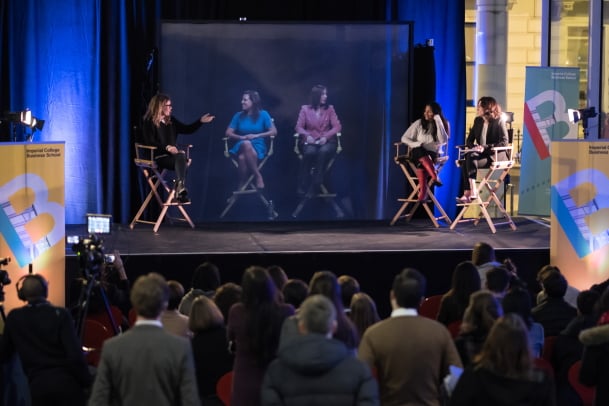When it comes to media work for business schools and higher education, there are a number of topics and areas that can be used as story ideas for the media. Perhaps there is a new research paper to share or an academic has an opinion they want to express.
The trick is knowing what will work best with the media to achieve your target goals, whether that’s a specific publication or features within a certain country or region, for example. Some stories will have aspects to them which could lead to hundreds of features in national and local press, while some will be perfect for securing international coverage, from South East Asia to Africa.
For an idea of what is working well for other business schools and higher education institutions, here are some examples of topics the BlueSky Education team has used to secure fantastic media coverage:
New Leadership
A change of leadership is often used by higher education institutions to generate stories to share with the media, as was the case with Karen Spens.
Karen Spens started as President of BI Norwegian Business School in 2022, becoming the school’s first female and non-Norwegian President in their 80-year history. But it wasn’t just her gender and nationality that led to features in Forbes, Poets&Quants, and Authority Magazine; it was her thoughts on the future of business education and ways in which she operates as a leader. These publications wanted to find out more about what Karen has in-store for BI as she took the helm.
Another example of this comes from the University of Oxford Saïd Business School. They also welcomed a new Dean in 2022: Soumitra Dutta. It’s not just the school’s association with one of the world’s oldest and most prestigious universities, but the fact Soumitra is originally from India, that allowed his profile to feature in two Times of India articles, exploring his appointment and work at Oxford Saïd.
These offer examples for how the role of the Dean or President of the school, as the face of the institution, not only lends power to securing certain media coverage, but how the background and previous experience of an individual can be used to target specific regions.

Interesting and Relevant Research
A research paper from Nazarbayev University reviewed previous work into the scientific structure of mare’s milk and how it compared to the more commonly consumed cow’s milk. The research found that mare’s milk had a number of health benefits not found in cow’s milk.
A press release on these findings led to number of articles covering the research including The Times, which boasts more than 29million monthly visitors, and Posta, a Turkish publication which receives around 17million readers per month. This story also featured in trade publications on travel and food including Food and Drink Technology and The Travel Magazine.
This example also proved that some topics can be relevant well after the initial sharing of a press release. Around a year later, the research featured in a number of publications, including The Times, as it was relevant to a news story in the UK at the time.
This story works successfully as it is an interesting topic due to the perceived oddness of it, which helps grab the attention of the reader. Not all institutions will be able to offer research into the benefits of drinking horse milk, but this is an example of how intriguing research can be used to generate media interest.
Another story successful in securing coverage in the UK as well as internationally includes research from the University of Cologne which found information learnt from googling is easily forgotten compared with facts read in books.
Researchers discovered that the human brain quickly forgets data found using an internet search engine because it is so readily available. The findings were featured in more than 35 media hits, including The Times, Daily Mail, MSN, and Fox News.
This research received so much media attention, not just because it is interesting, but because it is relatable. We all use the internet to answer our questions, and have perhaps noticed instances where we’re unable to remember why we opened the search app on our phone or the answer to a question we just googled.

Impressive Initiatives and Advancements
Another interesting topic involved a technological development almost straight out of a sci-fi novel, featuring Imperial College London being the first in the world to offer their business students lectures led by holographic professors.
The holograms are able to engage with students in real-time, responding to reactions and taking questions via a camera link as if they were in the same room despite the professor actually delivering the lecture in, what could be, a completely different country.
This story led to a vast amount of coverage in more than 200 publications including local and national press, as well as top tier trade publications, such as The Financial Times and The Telegraph. The Financial Times are a well-respected newspaper reporting on business, finance, and economics with an online circulation of more than 18 million, while The Telegraph is a popular UK newspaper with an online circulation of almost 99 million. Stories like this are not restricted to UK coverage either, with features in international publications including BBC Vietnam and Computer Sweden.
This story worked well as it was an incredibly interesting and relevant topic; technology is improving every day and permeating into every aspect of life, especially education. And the idea of having holographic lectures is a concept almost too outlandish to consider, so grabs attention.
The ease of access to artificial intelligence is another technological advancement recently thrust into the limelight, with the launch of ChatGPT and other platforms, raising questions around the use of AI in education, image generation, writing, and more. Schools incorporating these technological advancements into their teaching and programmes will grab the attention of the media, such as ESMT Berlin’s Master’s in Analytics and Artificial Intelligence featured in BusinessBecause or Insead’s integration of ChatGPT reported on by the FT.
Another example of technological progression includes NEOMA Business School’s virtual campus, launched amidst the height of the COVID-19 pandemic, featured in The PIE News and EFMD Global. An incredibly relevant development from the school, particularly at the time, as students and faculty were unable to gather on campus easily.
If you want to understand what is working for your competitors, keep an eye on media coverage they are securing, and understand the type of stories that are helping them to reach the audiences and media publications you also want to reach.
To find out more about how we can help you reach your target audiences, get in touch today!
Kyle is experienced in working with leading institutions in far-flung corners of the globe, from London to Kazakhstan. His client list features the likes of the London School of Economics’ Department of Management, ESMT Berlin, BI Norwegian Business School, Nazarbayev University, and many more around the globe.
Originally published April 2020, updated March 2024




